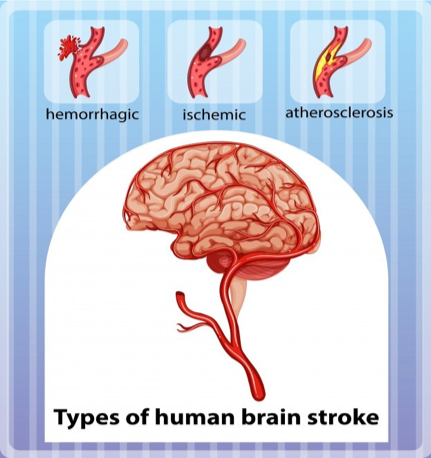Articles
Alert! Stroke can cause death

All types of strokes are basically dangerous, but there are several types of which cause severe disability and / or lead to death. Strokes are generally divided into two types, namely ischemic stroke and hemorrhagic stroke. Ischemic stroke is a stroke caused by a blocked blood vessel that causes blood flow to the brain partially or completely stopped, while a hemorrhagic stroke is a stroke caused by a ruptured blood vessel in the brain.
The following types of strokes have the most potential to cause severe disability and even death:
Brain stem stroke
The brain stem is a vital part of the brain because it controls almost all important functions, such as breathing, blood pressure, heart rate, and is the center of brain awareness that allows us to remain aware of the world around us. All nerve impulses from the brain to get to the whole body must go through the brain stem. Therefore, a stroke that occurs in the area of the brain stem both ischemic and hemorrhagic strokes can cause severe disability to permanent unconsciousness and even sudden death. This depends on how widespread the stroke is.
Hemorrhagic stroke
Hemorrhagic stroke is caused by bleeding in the brain. There are 2 types of hemorrhagic stroke, namely intracerebral hemorrhage where bleeding occurs in the brain tissue and subarachnoid hemorrhage where bleeding occurs in the subarachnoid space (the narrow space between the surface of the brain and the layer of tissue that covers the brain).
There are many risk factors for someone to have a hemorrhagic stroke, but some of the most frequent of them are uncontrolled hypertension, brain blood vessel abnormalities such as arteriovenous malformations, ruptured aneurysms. Hemorrhagic stroke can cause complications such as hydrocephalus, increased intracranial pressure, and seizures. If not treated aggressively, this condition can cause severe brain damage, brain herniation, and even death.
Large thrombotic stroke
Thrombotic strokes are caused by large blood clots, which form in blood vessels, or migrate to one of the brain’s main blood vessels. This large blood clot is very dangerous because it can stop the flow of blood to the largest and most important blood vessels in the brain.
Malignant middle cerebral artery (MCA) syndrome is an example of this type of stroke. In this stroke the media cerebral arteries are blocked by large blood clots which cause large infarcts from almost all sides of the brain. As a result there will be extensive swelling in the brain, subsequently causing an increase in high pressure in the brain. This causes a decrease in consciousness, global brain disorders, herniation, and finally death. This large thrombotic stroke is most often caused by a condition of abnormal heart rhythm (atrial fibrillation)
Symptoms of stroke are often found to be non-typical such as weakness of limbs, slurred speech and / or mouth opening, language difficulties, but can be in the form of spinning dizziness, headache, double vision, impaired balance and impaired memory. Signs and symptoms of stroke can appear and occur in different parts of the body. Not everyone can recognize the signs and symptoms of this stroke easily. However, most of the signs and symptoms of stroke are quite troublesome and unsettling so it is difficult to simply ignore.
There’s an easy way to find out signs of a sudden stroke and remind you to act quickly if it happens:
There is a speech disturbance, do your words sound unclear and have difficulty speaking and being understood? Try saying simple sentences over and over like “blue sky.” Are the sentences repeated correctly and smoothly?
Asymmetrical Face, does one side of the face feel heavy or numb? Try to smile and ask others to see your face, is the smile uneven?
Members of Body Movement Feel Weak, does one of your arms feel weak or numb? Try lifting your arms. Is one arm not raised?
Immediately to the hospital! If you or someone shows these symptoms, and even if the symptoms have disappeared, call an ambulance and leave immediately or take the person to the hospital. Check the time so that you know when symptoms first appear because this information is important for the doctor to influence treatment decisions.




